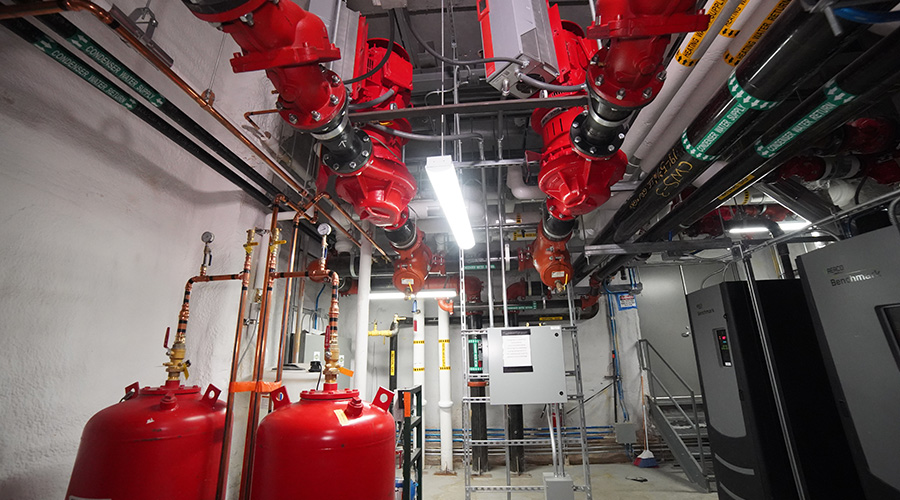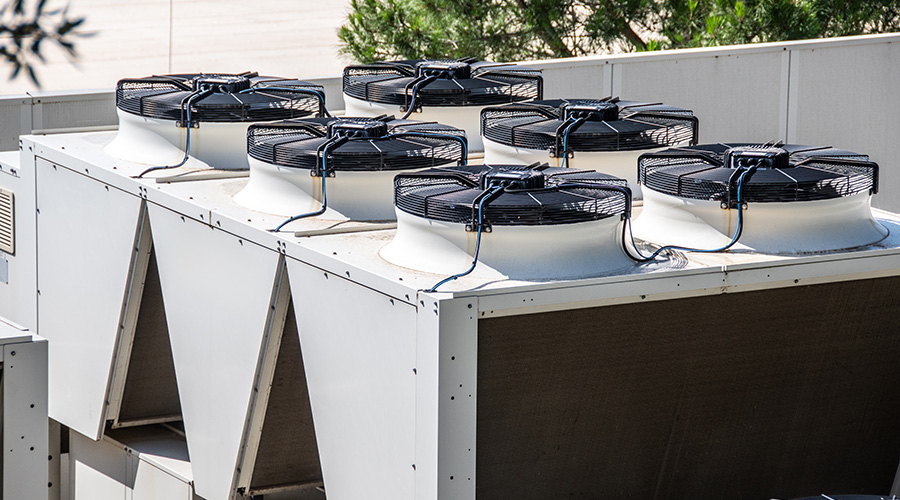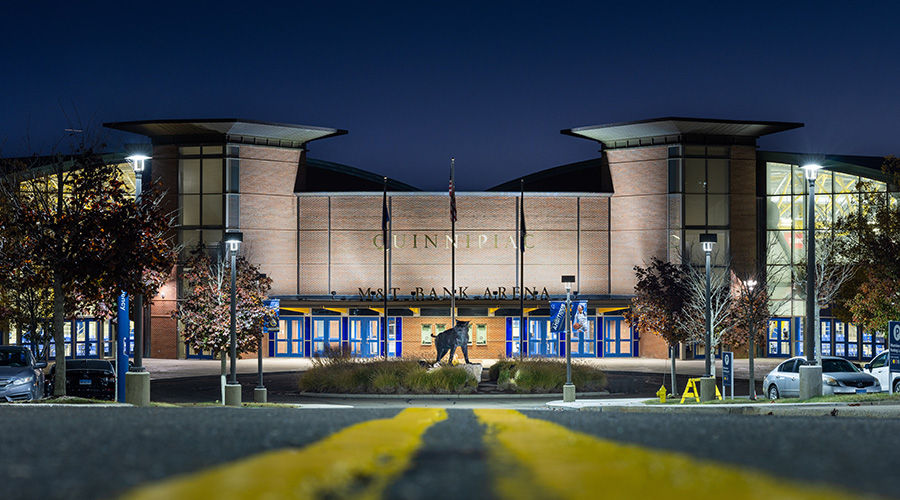Innovative HVAC Elements to Consider
For this project, an underfloor air distribution system and chilled beam were analyzed. The raised flooring in this application enhanced space utilization flexibility and was a value-added element the owners desired for office space. The chilled beam mechanisms are passive coils (no forced air) positioned within the ceiling and fed with cooled water at a non-condensing temperature so that sensible cooling "drops" to the occupied spaces. Both underfloor air distribution and chilled beams provide high-performance elements and enhance building operation and energy efficiency.
Underfloor-air-distribution systems supply air from the floor level, putting the cooling source in closer proximity to the cooling need. With conventional overhead air delivery systems, the conditioning air is typically forced from the ceiling level down to the occupant and equipment. In a cooling mode, the air must travel through a mass of hotter air that has naturally risen to the ceiling. As it falls, the cooler conditioned air mixes with hotter air, reducing the performance of the HVAC system.
Underfloor air distribution systems invite the hot air to rise, displacing it upward to the ceiling levels for return. The occupied lower 7 feet is conditioned; above that level, elevated temperatures are not sensed by occupants or equipment.
The pressurized plenum of the underfloor space serves as a supply air distribution system. It is a low-static-pressure delivery system. The economic benefit of reducing fan static pressure requirements comes in fan energy savings. The model for this project showed a 13.4 percent decrease in fan energy use with the underfloor system.
Chilled beams used in the design model also produced significant energy savings. The design model used passive chilled beams at an 11 foot ceiling level with 62 degree supply water source. The beams were able to provide sensible cooling directly to the occupied space. The savings came because less air would have to be moved. The chilled beams themselves, along with associated piping and pumping, did come at a premium cost; however, the simple payback was just 1.2 years.
It is important to recognize that many design elements are mutually reinforcing and beneficial, and contribute to the overall performance of the building. For example, solar shading was analyzed in a number of configurations and found to have a simple payback of 12.7 years. Solar shading, however, not only reduces the heat gain and cooling load on the interior spaces, but serves the important purpose of reducing glare in occupied spaces.
Automated daylighting controls, which stage electric lights on or off based on availability of sunlight to the occupied space, also have some effect on HVAC design. They trim overall cooling requirements by eliminating much of the simultaneous internal lighting and solar heat gains.
The energy model allows secondary factors to be examined in depth. For example, the model for this high-rise project included a comparison of different supply-air duct risers at different velocities and thus different static pressures. Higher velocity, higher static pressure ducting uses less sheet metal and requires smaller shafts. However, slowing down air velocity by increasing duct area means lower static pressure for the fan system, which reduces fan power consumption. The added cost of more sheet metal and larger vertical shaft space through the building was offset by the annual fan-energy savings. Additionally this lower velocity vertical main through the building will generate less noise and was embraced, not resisted, by the team.
Another key player in the integrated design team is the cost estimator. Because of the large number of options, it is important to know the cost implications of each very quickly to streamline the decision making process. Ultimately, without accurate estimations, the payback and life-cycle cost analyses lose validity.
Owner's Role in Integrated Design
In a high-performance building design process, the owner should be an integral part of the design team, aware of costs and benefits early and throughout the process. The new normal for design is to continue to improve upon building performance and do more with less. Budgets need to be met and elements need to be fluid, but having the project ownership engaged and a part of the process is essential to protecting the high performance design elements. Otherwise, there's a risk that VE will stand not for Value Engineering but Value Elimination. And of course owners will have to ensure that the building is operated to continue to achieve energy savings projected by the energy model.
In the effort to find the right combination of design elements that will lead to a high-performance building with a high-performance HVAC system and a sustainable design, the design team has to be able to integrate all these elements together. It's a complicated process that depends on interaction among members of the team when decisions are being made about high-performance curtain walls, enhanced insulation walls, or solar shading elements. It typically takes several iterations of the model to arrive at a decision on each element. On the most successful projects, the owner has bought into the process and has gained a thorough understanding on where and how each item is valuable to achieving the ultimate goal of a high-performance building.
Jeffrey L. Heiken, PE, LEED AP, is an engineering design principal with KlingStubbins in Raleigh, N.C. He has led engineering in for the firm's southeast regional office since it's opening in 2002. Heiken has 24 years experience in design and management of projects from office buildings to pharmaceutical laboratory and animal facilities.
Related Topics:












